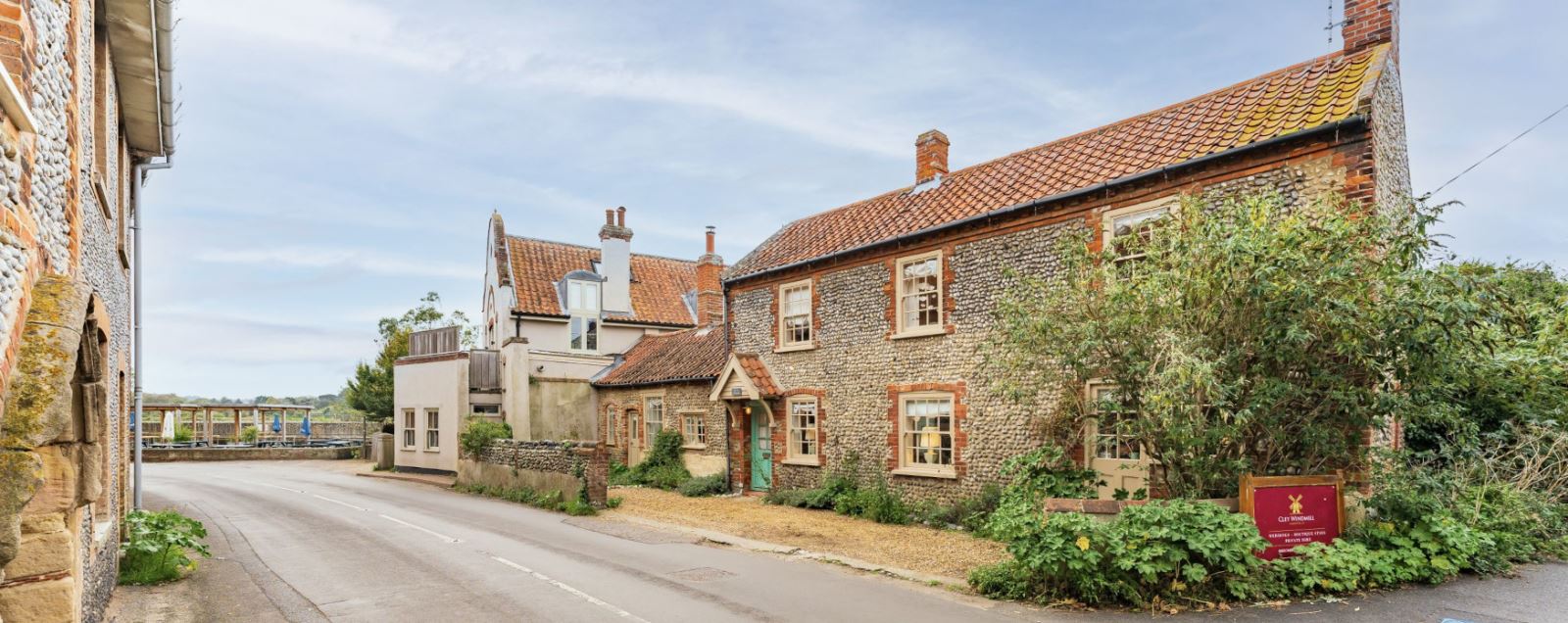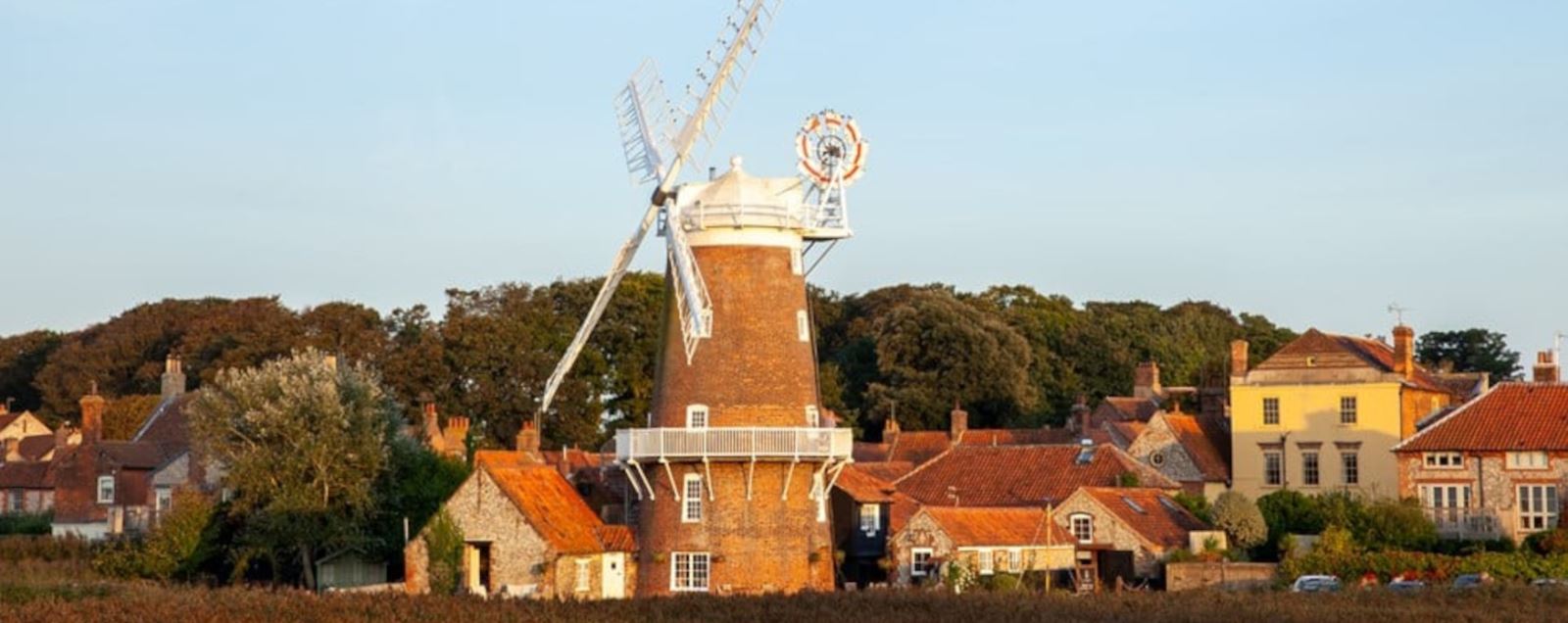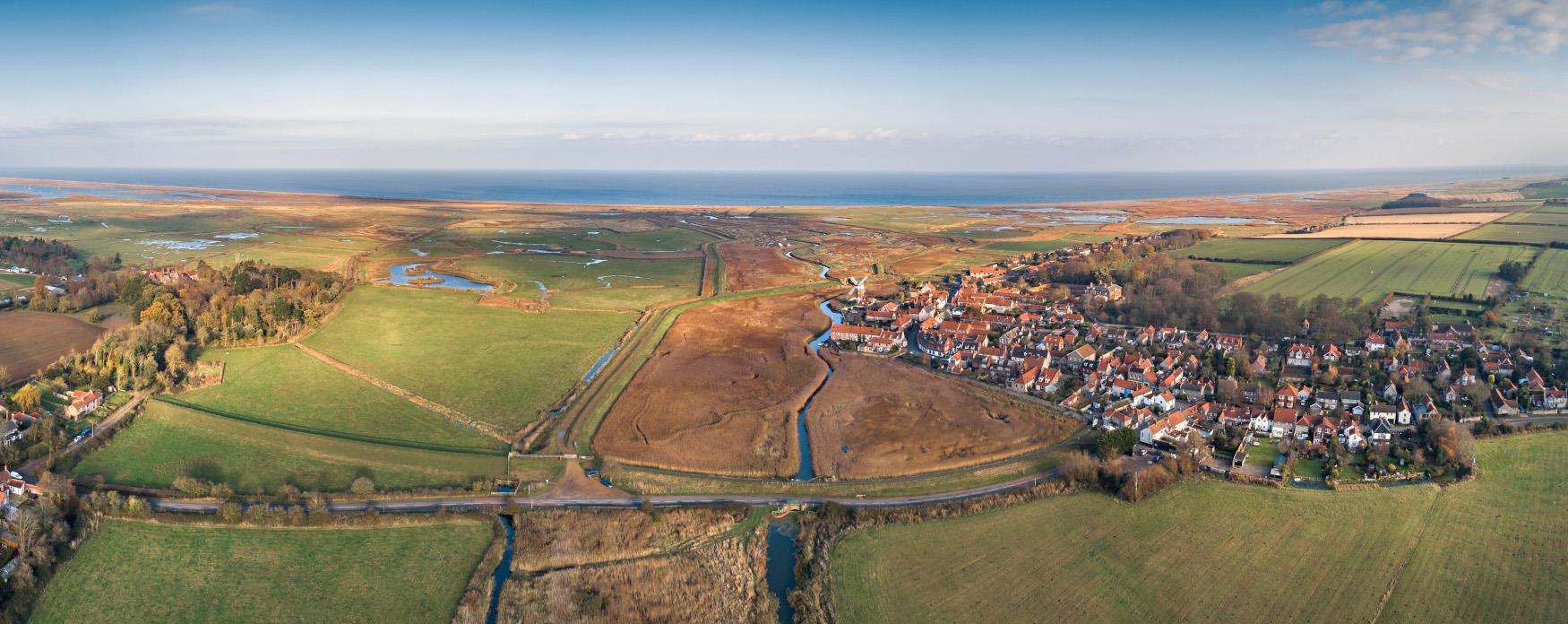To provide you with the best experience, cookies are used on this site. Learn more

To provide you with the best experience, cookies are used on this site. Learn more



The village of Cley next the Sea with its famous 18th century windmill, is on the doorstep of a nature reserve set in an Area of Outstanding Natural Beauty with fine coastal walks.
Cley next the Sea was an important trading port in the middle ages and is now best known for its nature reserve. Between the village and the sea, you will finds Cley Marshes, a nature reserve owned by the Norfolk Wildlife Trust and is its oldest and well known nature reserve. It offers some of the UK's best birdwatching and has six hides providing fantastic views. Cley's lagoons and beach, grazing marsh and reedbeds attract wintering and migrating wildfowl and waders, making it a haven for birdwatchers.
.jpg)
Standing on the edge of the marshes and the village is Cley's other famous landmark, an 18th century windmill. Now a guesthouse, it is open to the public offering fantastic views over marshland which was used for horse races in the early 19th century and was a haunt for smugglers! The shingle beach can be accessed through the marshes and is a great place for sea fishing.
.jpg)
Next to the village green sits the impressive 13th century St. Margaret's church. The narrow village streets are lined with unique shops including a smokehouse, bookshop, picnic fayre deli, tea shops and a pub as well as a shop selling hand-thrown stoneware pottery, made on site. Sitting on the Norfolk Coast Path, you can walk from Cley to Holme next the Sea, which joins the ancient Peddars Way National Trail.

With a good choice of accommodation, Cley is a tranquil place with a breathtaking landscape for those wanting to expore the coast and wildlife. It is packed with charm and character and whether you're a nature lover, a foodie, or simply looking for a peaceful getaway, this hidden gem has something to offer.

Explore Cley next the Sea



